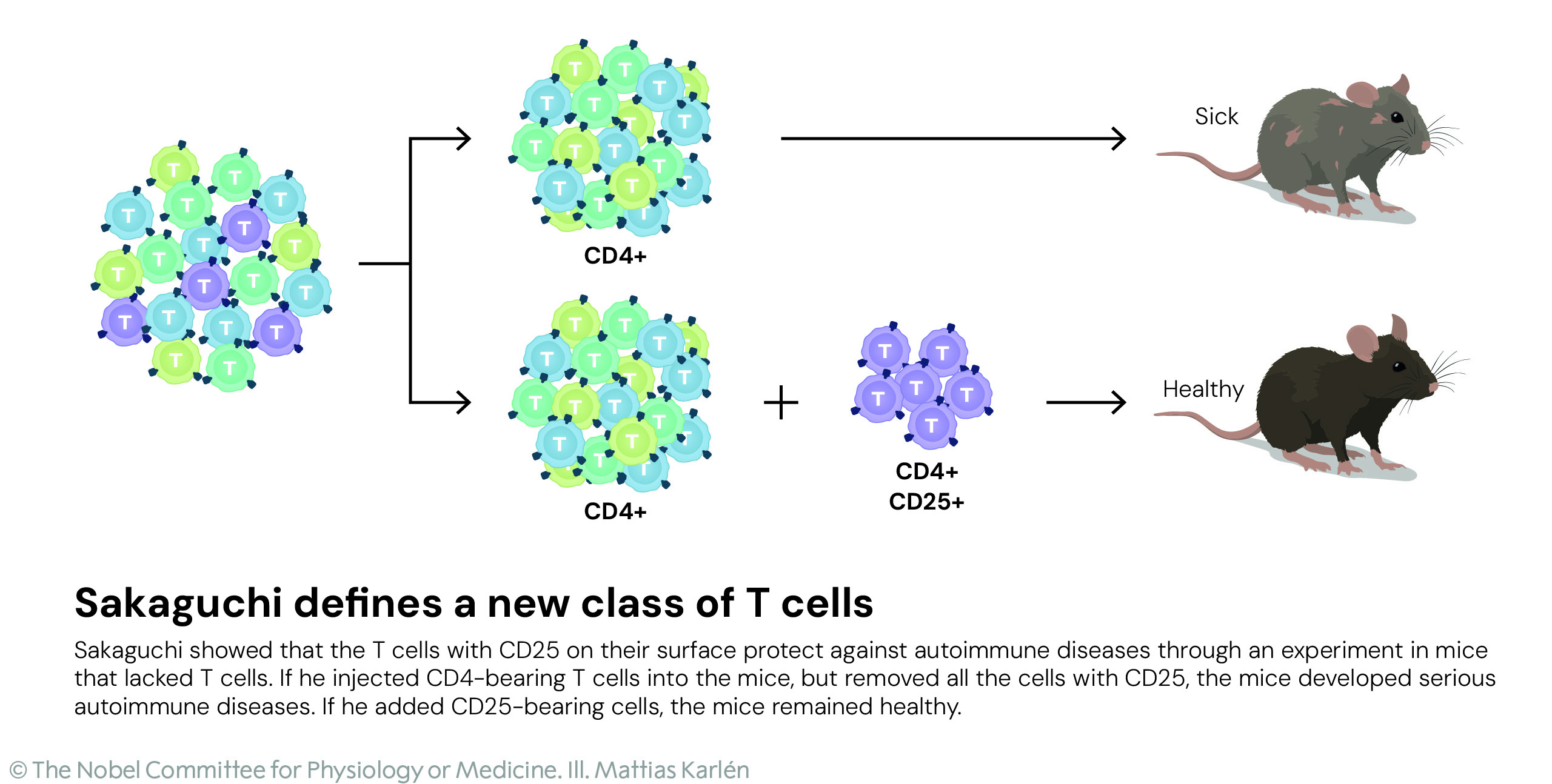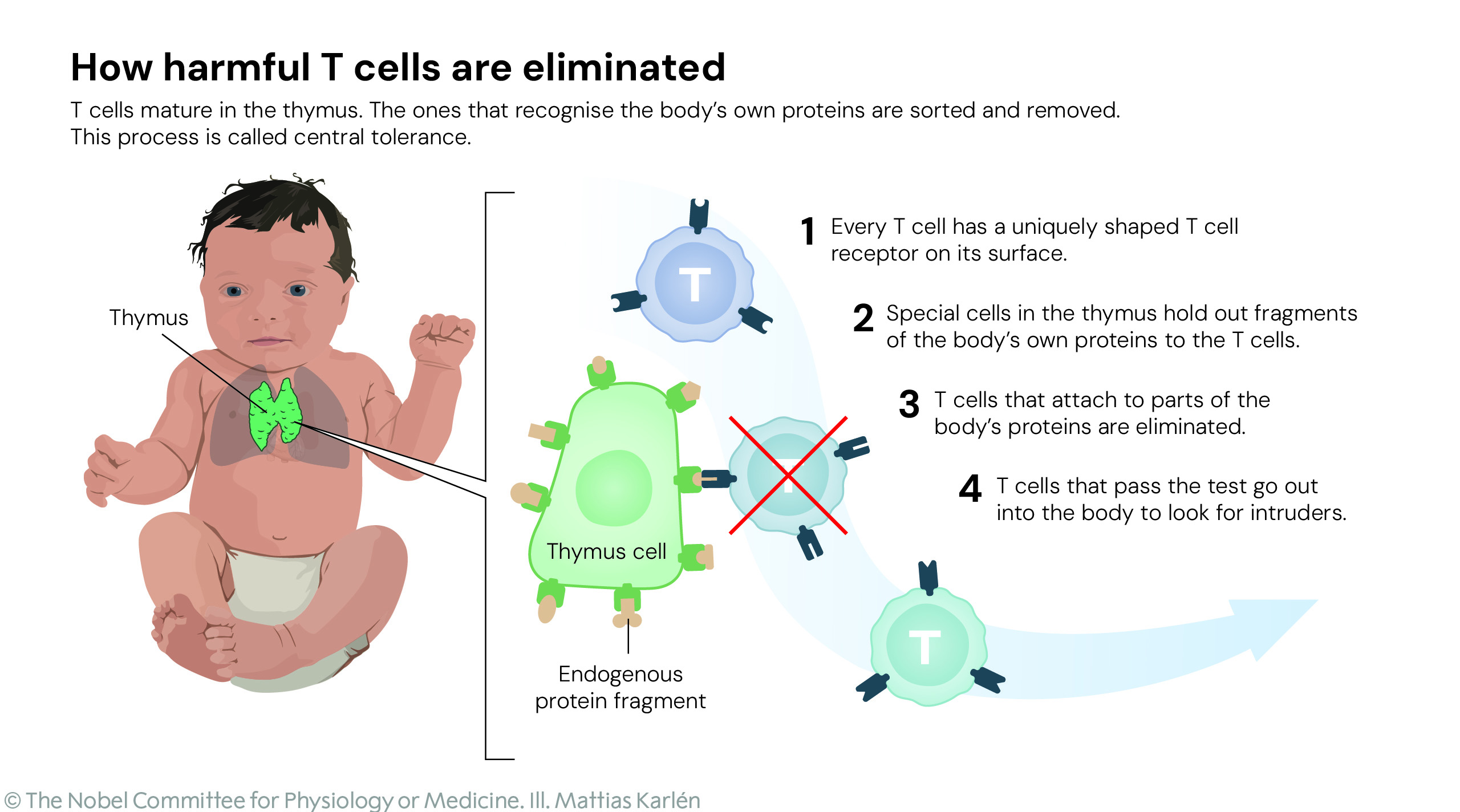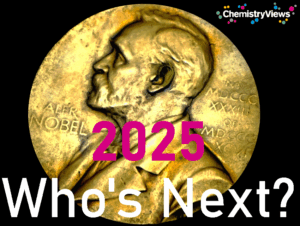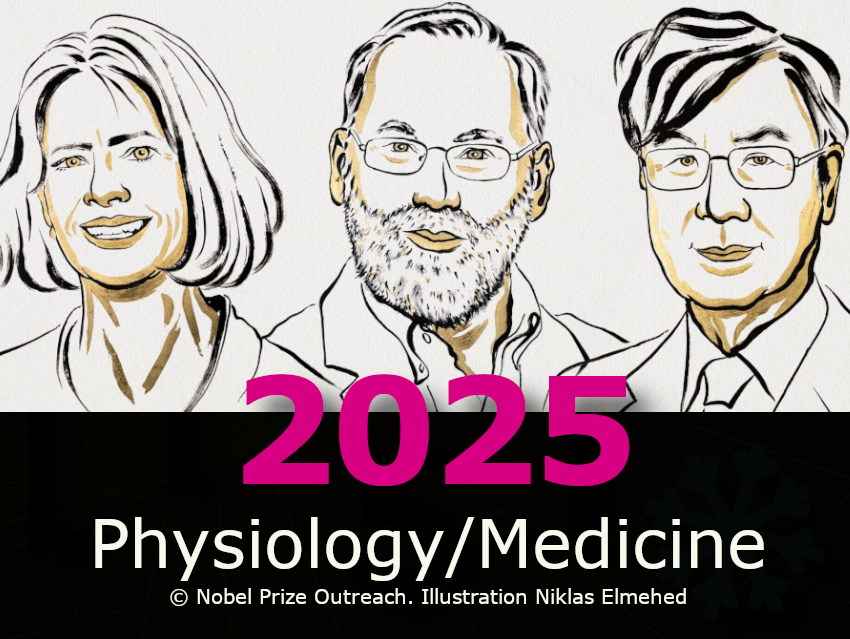The 2025 Nobel Prize in Physiology or Medicine has been jointly awarded to
- Mary E. Brunkow, Institute for Systems Biology (ISB), Seattle, WA, USA,
- Frederick J. Ramsdell, Sonoma Biotherapeutics, San Fransisco, CA, USA, and
- Shimon Sakaguchi, Osaka University, Japan,
“for their discoveries concerning peripheral immune tolerance,” that prevents the immune system from harming the body [1].
They discovered regulatory T cells (Treg cells), the immune system’s “security guards,” which control immune responses and prevent attacks on the body’s own tissues. This created a new research field and led to treatments now in clinical trials aiming to cure autoimmune diseases, improve cancer therapies, and reduce complications after stem cell transplants.
Olle Kämpe, the Chair of the Nobel Committee, said that these discoveries have been crucial in improving our understanding of how the immune system works and why not everyone develops serious autoimmune diseases [1].
1 Research
Constantly, our immune system figures out what to attack and which cells to protect. So how does the immune system determine what it should attack and what it should defend?
The laureates identified regulatory T cells which prevent immune cells from attacking our own body:
In 1995, Shimon Sakaguchi made a key discovery, showing that the immune system is more complex than thought and identifying a previously unknown class of immune cells, which protect the body from autoimmune diseases [2].

In 2001, Mary Brunkow and Fred Ramsdell discovered that a gene called Forkhead Box Protein P3 (FOXP3) explains why some mice get autoimmune diseases and that mutations in the human equivalent of this gene cause the serious autoimmune disease IPEX [3].
In 2003, Shimon Sakaguchi was able to link these discoveries, proving that the FOXP3 gene governs the development of the cells he identified in 1995. These cells, now known as regulatory T cells (Treg cells), monitor other immune cells and ensure that our immune system tolerates our own tissues [4].
The discoveries launched the field of peripheral tolerance, and led to new medical treatments for cancer and autoimmune diseases. This may also lead to more successful transplantations. Several of these treatments are now undergoing clinical trials.

2 Laureates
Mary E. Brunkow, born in 1961, studied molecular and cellular biology at University of Washington, Seattle, WA, USA and Princeton University, NY, USA, and gained her Ph.D. from Princeton University in molecular biology in 1991.
She joined Institute for Systems Biology (ISB), Seattle, WA, USA, in 2009.
Frederick J. Ramsdell, born 4 December 1960 in Elmhurst, IL, USA, studied biology at the University of California, San Diego, USA, and received an Ph.D. in immunology from the University of California, Los Angeles, USA, in 1987. After a postdoctoral stay at the National Institutes of Health (NIH), USA, he worked in biotech companies in the Seattle area, including senior leadership positions at Darwin Molecular/Celltech, ZymoGenetics, Novo Nordisk, and aTyr Pharma. Since 2016, he has been Research Director at the Parker Institute for Cancer Immunotherapy in San Francisco, USA. He is co-founder of Sonoma Biotherapeutics, a biotechnology firm in San Francisco.
Among many other honors, Ramsdell was awarded the Crafoord Prize for research in polyarthritis in 2017 jointly with Shimon Sakaguchi and Alexander Rudensky for the discovery of regulatory T cells, which counteract harmful immune reactions in arthritis and other autoimmune diseases.
Shimon Sakaguchi, born 19 January 1951 in Nagahama, Shiga, Japan, studied at Kyoto University, where he earned his Ph.D. in 1992. After completing postdoctoral studies at Johns Hopkins University, Baltimore, MD, USA, and Stanford University, CA, USA, as a Lucille P. Markey Scholar, Sakaguchi served as an Assistant Professor in the Department of Immunology at the Scripps Research Institute, La Jolla, CA, USA. He returned to Japan in 1991 and continued his immunology research at RIKEN Institute as an Investigator of the Japan Science and Technology Agency and subsequently as the Head of the Department of Immunopathology at Tokyo Metropolitan Institute of Gerontology, Tokyo. From 1998 to 2011, he was a Professor and the Chairman of the Department of Experimental Pathology at the Institute for Frontier Medical Sciences, Kyoto University, and served as the Director of the Institute for several years.
He is currently a Distinguished Professor at the World Premier International Research Initiative (WPI)-Immunology Frontier Research Center (IFReC) at Osaka University, Japan.
Among many other honors, he was awarded the Robert Koch Prize in 2020, the Crafoord Prize in Polyarthritis in 2017 (with Shimon Sakaguchi and Alexander Rudensky), and the William B. Coley Award in 2004.
References
[1] Website of the The Nobel Foundation nobelprize.org
[2] Sakaguchi, S., Sakaguchi, N., Asano, M., Itoh, M., Toda, M. Immunologic self-
tolerance maintained by activated T cells expressing IL-2 receptor alpha-chains (CD25),
J. Immunol. 1995, 155, 1151–1164.
[3] Craig L. Bennett, Jacinda Christie, Fred Ramsdell, Mary E. Brunkow, Polly J. Ferguson, Luke Whitesell, Thaddeus E. Kelly, Frank T. Saulsbury, Phillip F. Chance, Hans D. Ochs, The immune dysregulation, polyendocrinopathy, enteropathy, X-linked syndrome (IPEX) is caused by mutations of FOXP3, Nature Genetics 2001, 27, 20–21. https://doi.org/10.1038/83713
[4] Shohei Hori, Takashi Nomura, Shimon Sakaguchi, Control of Regulatory T Cell Development by the Transcription Factor Foxp3, Science 2003, 299, 5609, 1057-1061. https://doi.org/10.1126/science.1079490
Source
- Shimon Sakaguchi, Gairdner Foundation (accessed October 6, 2025)
- Scientific background 2025: Immune tolerance The identification of regulatory T cells and FOXP3, Website of the The Nobel Foundation (accessed October 6, 2025)
Also of Interest
 |
Who’s Next? Nobel Prize in Chemistry 2025 |
- Nobel Prize in Physiology or Medicine 2024,
Victor Ambros and Gary Ruvkun, University of Massachusetts Medical School, USA, were honored for the discovery of microRNA and its role in post-transcriptional gene regulation - Collection: Nobel Prize in Chemistry
Collection of interviews with Nobel Laureates and Nobel Prize quizzes


